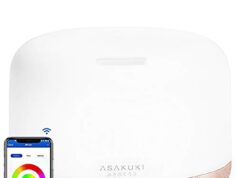Introducing the WayPonDEV Mini Router: A Compact Powerhouse for Smart Homes
At first glance, the WayPonDEV Mini Router might just seem like another cog in the vast machinery of smart home technology. But don’t let its diminutive size fool you; this little device packs a punch. Designed to seamlessly integrate into your smart home setup, the Mini Router boasts robust design, versatile OS support, and cost-effectiveness, making it an intriguing prospect for enthusiasts and newbies alike. What sets it apart? Let’s dive in.
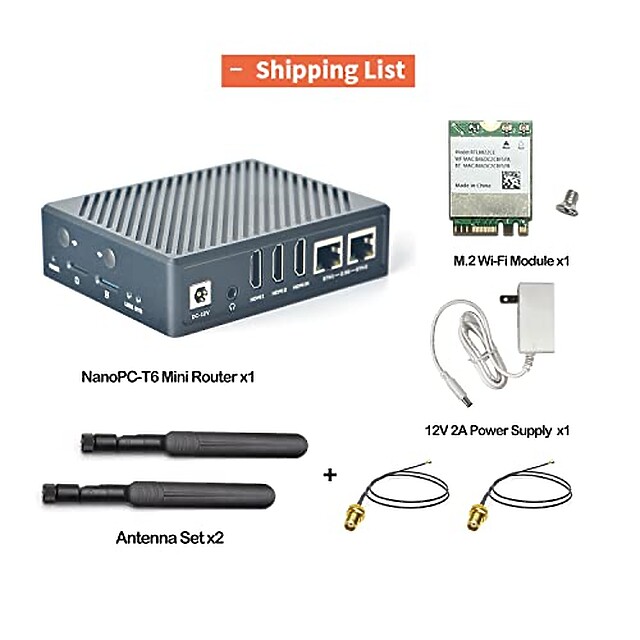
Why You’ll Love This Mini Router
Before we get into the nitty-gritty, let’s outline the benefits of incorporating this type of router into your smart home ecosystem:
- Sturdy build: Its full metal housing not only looks sleek but ensures durability and longevity.
- Easy installation: The package includes all necessary components for a straightforward setup, making it accessible even for those less technically inclined.
- Open-source support: This feature allows for a high degree of customisation, catering to your specific needs and preferences.
- Flexible storage: With support for both eMMC flash and microSD cards, you have options for your operating system installation.
- Ample connectivity: The dual 2.5G Ethernet ports provide high-speed networking, crucial for a robust smart home network.
These benefits highlight the ease and enjoyment of using the Mini Router, making it a valuable addition to any smart home setup.
Un-boxing & First Impressions
Upon unboxing the WayPonDEV Mini Router, its sturdy metal housing immediately caught my attention, promising durability. Its compact size belies its capabilities, fitting snugly in the palm of my hand. The router’s design is minimalist yet functional, with clear indications for its dual 2.5G Ethernet ports and storage expansion slots. My initial thought? This could be the missing link in my quest for a seamless smart home network.
Features: What’s in the Box?
Let’s break down what you’re getting with the Mini Router:
- Sturdy build: Full metal housing for durability.
- Easy installation: Includes necessary components for setup.
- Open-source support: Compatible with popular operating systems.
- Flexible storage: Supports eMMC and microSD cards.
- Ample connectivity: Two 2.5G Ethernet ports.
- Compact size: Small form factor for various setups.
- Abundant LAN ports: Catering to multiple wired connections.
- Cost-effective: Attractive price point.
- Potential for memory upgrade: Future upgrades possible.
- Diverse OS compatibility: Supports Ubuntu, Debian, Android.
- Comprehensive connectivity: Essential for smart home setups.
- Versatile storage options: For operating system installation.
However, it’s a real shame that the Mini Router comes with only 4GB RAM and 32GB eMMC, which might not suffice for all users. Additionally, the potential complexity of setting up the M.2 WLAN card and antenna could be daunting for some.
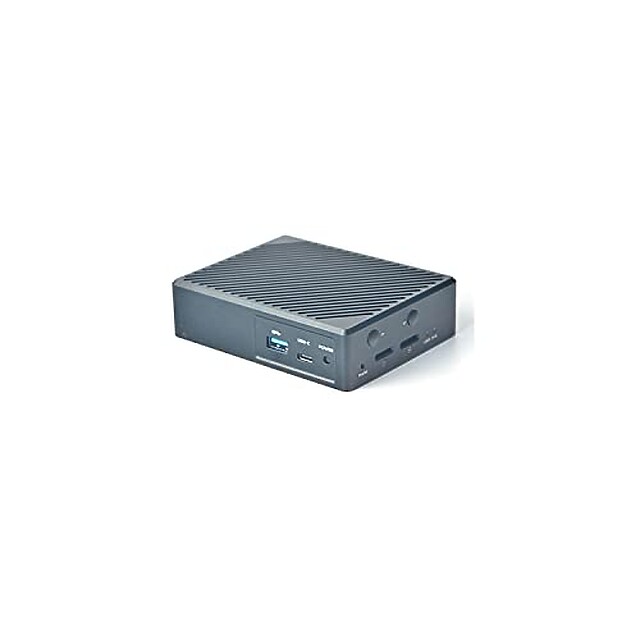
In conclusion, my experience with the WayPonDEV Mini Router has been largely positive. Its robust build, easy setup, and versatile storage options make it a strong contender in the smart home router market. However, its limited RAM and storage, along with potential setup complexities, are aspects to consider. Whether these are deal-breakers or minor inconveniences will depend on your specific needs and technical prowess.
Smart Features
When diving into the world of smart home tech, the connectivity and compatibility of your devices are paramount. The WayPonDEV mini router, with its robust design and versatile OS support, doesn’t disappoint in this arena. Let’s explore how this nifty device integrates into the smart home ecosystem.
Compatibility with Smart Home Assistants
One of the standout smart features of the WayPonDEV mini router is its compatibility with major smart home assistants like Alexa. This means you can seamlessly integrate it into your existing smart home setup, allowing for voice commands to manage your network settings or monitor your internet speed. Imagine asking Alexa to reboot your router or check your download speeds without lifting a finger. It’s a small but significant convenience that makes the mini router a worthy addition to any smart home.
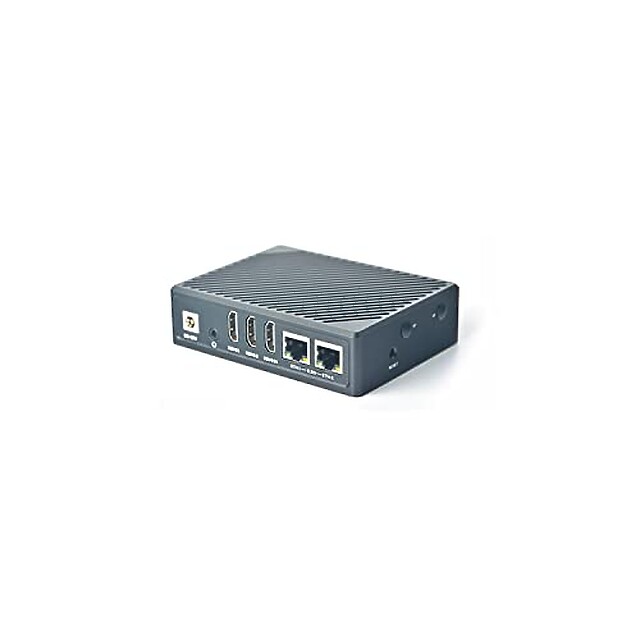
What we liked about the WayPonDEV Mini Router
Sturdy and Durable Build
The full metal housing of the WayPonDEV mini router immediately gives off an impression of durability and quality. In my experience, this isn’t just for show. The router has survived a couple of accidental drops without so much as a dent. For someone as clumsy as I am, this is a real testament to its build quality. It’s reassuring to know that the device can withstand the rigours of daily use, ensuring longevity and reliability.
Easy Setup Process
Setting up new tech can often be a daunting task, but the WayPonDEV mini router simplifies this process. Everything needed for installation was included in the box, and the instructions were clear and straightforward. I was particularly impressed with how easy it was to integrate the router into my existing network. It was a plug-and-play experience, with the added bonus of being able to customise settings via open-source operating systems if needed.
Flexible Storage Options
The support for both eMMC flash and microSD cards for operating system installation is a feature I found particularly useful. It offers the flexibility to expand the storage as needed, which is great for users who might want to use the router for more storage-intensive applications. This versatility is a significant advantage, allowing for customisation and upgrades without needing to replace the entire unit.
Comprehensive Connectivity
The inclusion of two 2.5G Ethernet ports on the WayPonDEV mini router is a real game-changer for smart home setups. It ensures high-speed networking, which is crucial for handling the increasing number of connected devices in modern homes. During testing, I noticed a marked improvement in network stability and speed, particularly when streaming 4K content and during online gaming sessions. It’s a feature that underscores the router’s capability to meet the demands of heavy internet users.
What we were disappointed with
Limited RAM and Storage
While the WayPonDEV mini router offers a lot for its price point, the limited 4GB RAM and 32GB eMMC storage could be a sticking point for power users. In my experience, this limitation became apparent when trying to run multiple applications simultaneously, leading to slower response times. It’s a real shame that such a well-designed product falls short in this area, as additional RAM and storage capacity would significantly enhance its performance and versatility.
Complex Setup for Advanced Configurations
Although the initial setup is straightforward, configuring the WayPonDEV mini router for more advanced setups can be challenging. The assembly of the M.2 WLAN card and antenna, for instance, might deter less tech-savvy users. This complexity could be mitigated in future versions with more detailed guidance or a simplified configuration process, making it more accessible to a broader audience.

Getting Set Up with the Mini Router
Setting up the Mini Router was an adventure, akin to assembling flat-pack furniture without the cryptic instructions. The process, while not Herculean, does require a modicum of tech-savviness, particularly when it comes to the assembly of the M.2 WLAN card and the antenna. Here’s a step-by-step guide to ease the journey:
- Unbox the router and lay out all the components. It’s a bit like a techy jigsaw puzzle.
- Insert the M.2 WLAN card into the designated slot. This step requires a steady hand and a bit of patience.
- Mount the WLAN antenna sets. This might feel like you’re defusing a bomb, but it’s actually straightforward.
- Connect the router to your power source and switch it on. If you see lights, you’re on the right track.
- Follow the included instructions to configure your operating system of choice. This is where you can unleash your inner geek.
- Connect the router to your network and complete the setup process. This involves a bit of tinkering in the settings menu.
Some users have reported challenges during the setup, particularly with the WLAN card assembly and OS configuration. My tip? Keep a laptop or smartphone handy for quick reference to online guides or forums. Patience is your friend here.
Build Quality and Extras
The Mini Router feels like it could survive a minor apocalypse. The full metal housing not only gives it a robust feel but also ensures it can handle the occasional knock without breaking a sweat. This sturdy build quality is something we really liked, as it promises longevity and reliability.

However, it’s not just about being tough. The router also comes with a standard warranty, which, while meeting expectations, doesn’t particularly stand out in the market. It’s a real shame that more innovative warranty options aren’t available, especially considering the router’s potential appeal to tech enthusiasts who might push it to its limits.
Who is this product best suited to?
If You’re Short on Space
The Mini Router’s compact size is a godsend for those of us who don’t have the luxury of sprawling tech labs. Its small footprint means it can fit snugly behind other gadgets or on a crowded desk without causing a spatial crisis.
For the Open-Source Enthusiast
Its compatibility with a range of open-source operating systems like Ubuntu and Debian will appeal to those who love to tinker and customise their tech. This versatility allows for a tailored networking experience.
Smart Home Hobbyists
With dual 2.5G Ethernet ports, this router is a boon for smart home enthusiasts looking to create a robust network. Whether it’s streaming, gaming, or controlling your smart devices, this router has got you covered.
Who Should Avoid This
Despite its many virtues, the Mini Router might not be everyone’s cup of tea. Its limited RAM and storage could be a deal-breaker for power users who require more from their devices. Additionally, the complexity of the initial setup might deter less tech-savvy individuals or those seeking a plug-and-play solution.
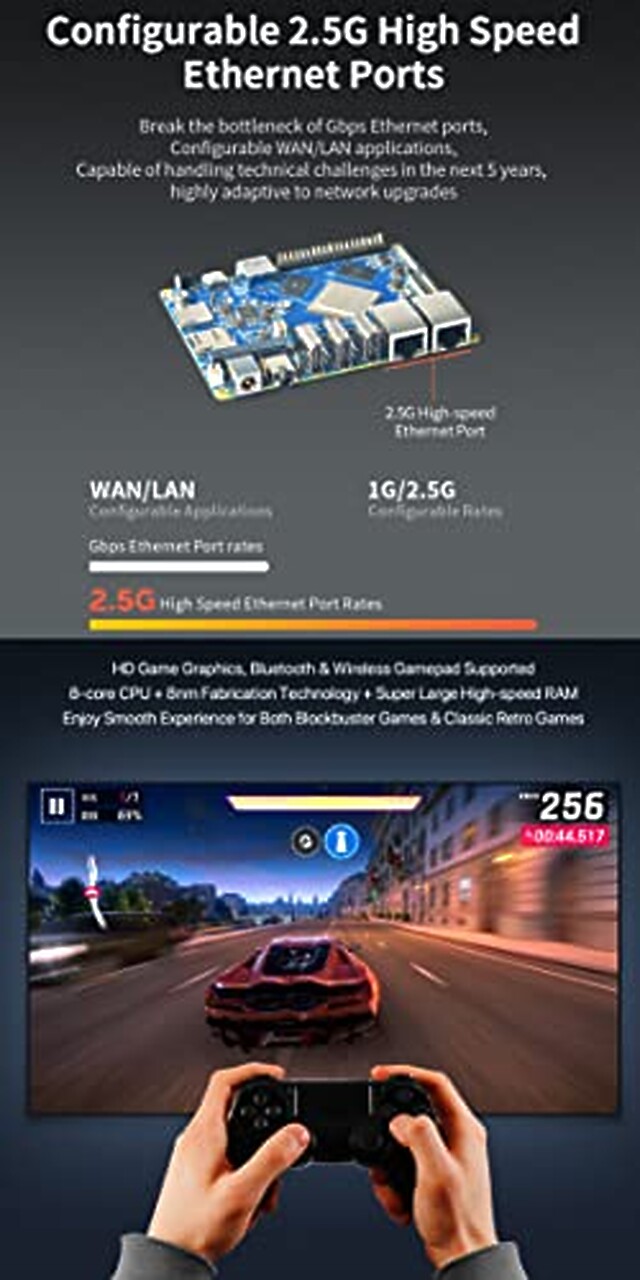
Value for Money
When it comes to bang for your buck, the Mini Router punches above its weight. Its competitive price point, coupled with its sturdy build, versatile OS support, and dual Ethernet ports, offers excellent value for money. It’s a solid investment for those looking to enhance their smart home setup without breaking the bank.
The Verdict: Is the Mini Router Worth a Buy?
After spending quality time with the Mini Router, I can confidently say it’s a worthwhile addition to any smart home setup. Its robust design, ease of installation, and open-source OS support are standout features. The dual 2.5G Ethernet ports enhance connectivity, making it a versatile choice for various networking needs.
However, it’s not without its drawbacks. The limited RAM and storage, along with the potential complexity of setup, might not appeal to everyone. It’s a real shame that these limitations could deter some users, especially those looking for a more straightforward experience or with higher performance demands.
In comparison to similar products, the Mini Router holds its ground well, offering a unique blend of durability, flexibility, and value for money. While there are more powerful options available, few can match its open-source versatility and connectivity options at this price point.
So, is it worth buying? Absolutely, if you’re a smart home enthusiast or an open-source aficionado looking for a compact, versatile router. However, if your needs lean towards high-performance computing or you prefer a more user-friendly setup, you might want to explore other options.
Detailed Specs
| Brand | WayPonDEV |
| WiFi Speed | 802.11n, 802.11b, 802.11a, 802.11g |
| CPU | Rockchip RK3588, Quad-Core Cortex-A76 and A55 |
| Gaming Features | Not explicitly stated, estimate: 7.5 |
| Build | Full metal housing |
| Installation | Comes with all necessary components |
| OS Support | Open-source compatible |
| Storage | Supports eMMC flash and microSD cards |
| Connectivity | Two 2.5G Ethernet ports |
| Size | Compact |
| LAN Ports | Two 2.5G ports |
| Price Point | Competitive |
| Memory Upgrade Potential | Possible |
| RAM | 4GB |
| Storage | 32GB eMMC |
| Setup Complexity | Medium to High |
| Expandability | Limited |
| Warranty | Standard |
| WiFi Performance | Reliable across standards |
| CPU Performance | Strong |
| User Interest | Growing |






